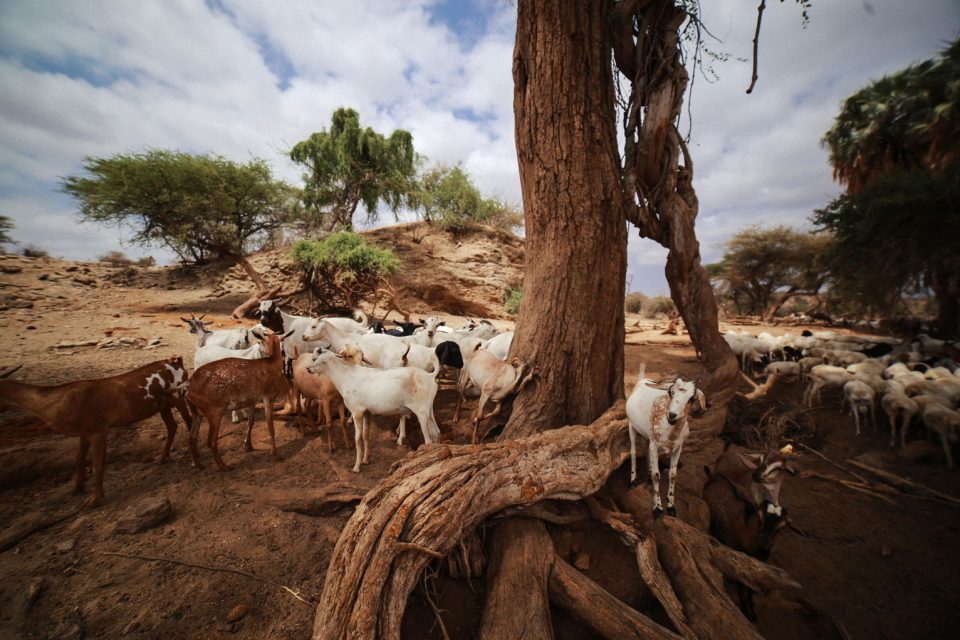How one of east Africa’s worst droughts is threatening livestock, livelihoods and tradition
For the people of Manyatta South, a small village of Laisamis town in Kenya’s far north, nightfall is the only reprieve from the desiccating heat and relentless sun, which have bleached the sandy fields pale. The landscape is nearly gentle now in the glow of the setting sun. Walking through the sandy base of a bone-dry riverbed, just one of many snaking throughout the sparse village that is home to 3,000 people, 33-year-old Benjamin Galwaha says that just in his lifetime, the change has been overwhelming. “This used to all be forested, with lots of wild animals and fruits,” he says. “But the population has exploded since my childhood.” Land in Marsabit County — bordering Ethiopia to the north, Turkana County in the west — is not a problem, but resources have always been scarce.
The Rendille and Samburu ethnic groups constitute much of Laisamis, which, translated from the Maa language, means “the smell of rotting flesh,” an allusion to the region’s history of mass violence that remains largely undocumented outside of the oral tradition. Maasai, Turkana and Borana are also pastoral people indigenous to this region. Despite linguistic and cultural differences, herding remains a way of life for all of these semi-nomadic people. Their cultural livelihood dates back millennia. Tradition here arose from practicality. The harsh arid and semi-arid landscape means that uses for the land are limited; farming, for instance, is untenable. Livestock movement is dictated by grazing and water needs. Seeing the masses of goats and camels nibbling through the brown brush and seemingly barren gravel, it’s a wonder that they’re able to find any nourishment. But even these hardy animals have their limits.
East Africa is facing one of the worst droughts in the last 40 years. It’s also the most punishing one in living memory for the older generation, one used to a myriad of hardships from political instability to natural resource scarcity and marginalization due to exclusion from development. Nearly everyone’s faces are weathered, evidence of a life marked by hardship.
Droughts have long plagued this part of the world, driven by naturally induced La Niña weather patterns that periodically heat waters in the Western Pacific, around Indonesia. The hot air evaporates off the surface of the ocean and sweeps west, toward East Africa, where it collides with air traveling east from the Atlantic and sinks to the earth, creating hot, dry conditions. Historically, not all La Niña events have led to poor rainfall in the eastern parts of the Horn of Africa. But since the turn of the century, human-induced warming has driven up temperatures in the Western Pacific, augmenting the effects of natural weather patterns and increasing the frequency and intensity of droughts.
After a season of poor rainfall and subsequent famine ravaged northern Ethiopia in the mid-1980s, meteorologists began developing models to predict droughts. Over the last two decades, the accuracy of their predictions has improved substantially, aided by the greater availability of rainfall data and satellite imagery. These “early warning systems” are crucial humanitarian resources that help governments and aid organizations direct resource allocation efforts before the worst conditions set in.
“Droughts are slow onset disasters,” said Chris Funk, director of the Climate Hazards Center at the University of Santa Barbara. “If there’s a rainfall deficit, that’s months before a stale harvest, which is months before food insecurity. So the bread and butter of famine prevention is watching the earth from space and being able to identify those places as quickly as we can.”
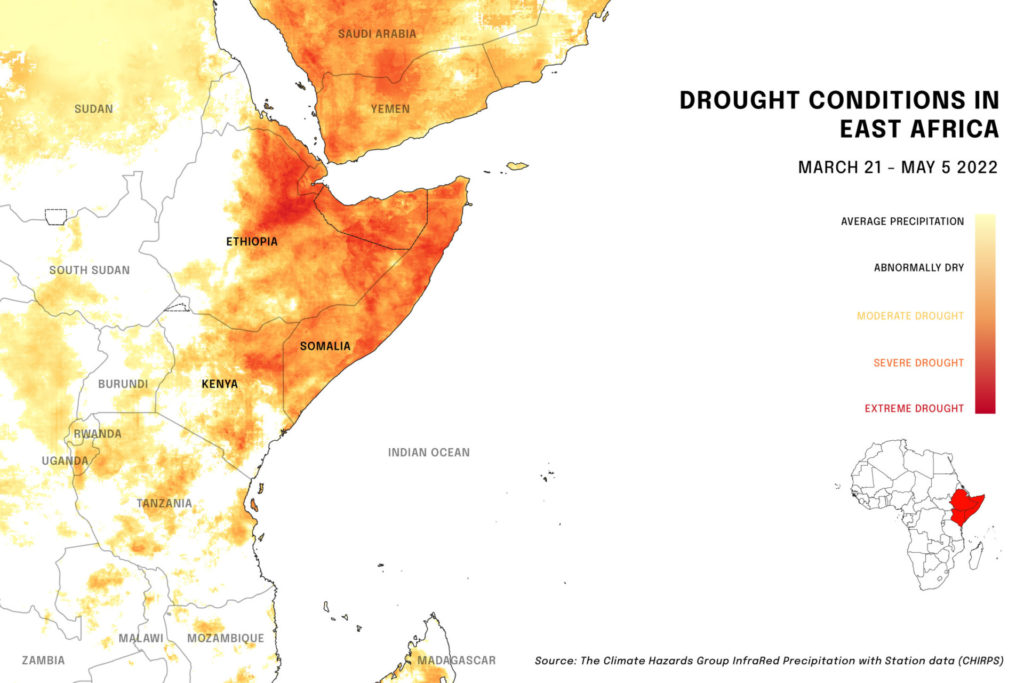
Experts like Funk are careful to distinguish between drought and famine, two terms that are often used interchangeably with the former assumed to inevitably lead to the latter. Molly Brown, a food security and remote sensing expert at the University of Maryland, said that drought exacerbates vulnerabilities related to the supply and demand for food, but when managed properly, it does not have to lead to famine. Countries with robust social safety nets can respond to early warning signs and offer support to affected individuals. According to Brown, it is when communities experiencing drought are left to fend for themselves that famine becomes a concern.
“Famines are caused by marginalization, lack of intervention, lack of attention,” she said. “It’s never caused by drought. It’s caused by livelihood.”
Analogously, in his 1981 seminal essay “Poverty and Famines,” Indian economist Amartya Sen argues that famine crises and mass starvation do not wholly stem from natural occurrences of food shortages, but rather from the inability of people to access food due to social and economic reasons. Factors include weak food distribution systems, unemployment and rising food prices. “An important aspect of the famine was its association with an uneven expansion in incomes and purchasing powers,” Sen wrote about the Great Bengal Famine of 1943, one of his case studies. Sen also adds that famine aggravates disease and mortality present in vulnerable regions. Underserved counties such as Marsabit fit the bill all too well.
Since its independence in 1963, Kenya — bearing wounds from a deep history of colonial-induced poverty — has contested marginalization and internal strife. Despite promises of political accountability and socioeconomic betterment via equitable resource distribution, the integration of remote, ethnic minority communities remains a perennial issue.
Nevertheless, Kenya has developed substantially over the last decade. Its economy, the largest in East Africa, grew an average of 4.7% each year from 2015 to 2019; poverty rates fell significantly.
But this widened resource base has not reached the nation’s citizens equally. The nomadic tribes of Kenya’s semi-arid north continue to be marginalized with limited access to social welfare benefits and increased vulnerability to climate-induced stress.
When local governments fail to respond to projections of drought from early warning systems, relief agencies like the United Nations Food and Agriculture Organization (FAO) must often scramble to amass funds for humanitarian aid.
And according to FAO, international financial support for drought-related humanitarian relief has indeed increased since 2011, when a severe famine in Somalia killed over a quarter of a million people. But more recently, the pandemic and the war in Ukraine have decreased funding prospects as East Africa enters its fourth season of drought.
Despite the worrying challenges of this drought, 40-year-old Mzee Lekurana Leruguba of Laisamis tries his best to maintain a sanguine attitude. “I’ve been on this [herding] journey since the age of 5, and am doing well, just enjoying life.” But the drought has been hard. Leruguba has six children — four girls and two boys, all under the age of 10 — between two wives (polygamy persists among many herding cultures). Three of his daughters look after the animals. He remains concerned that the drought will bring hunger to his children, while the weak market will limit his means to pay for their schooling.

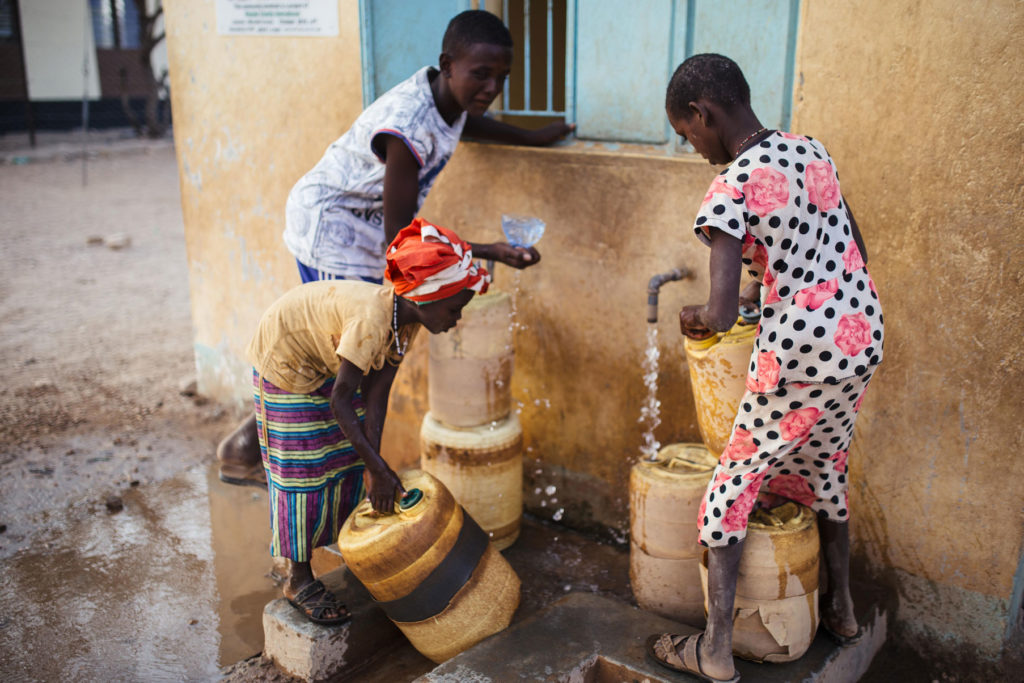
At Merille Livestock Market, the largest one in Marsabit County, herders from all over congregate every Tuesday to buy and sell their animals. Unsold camels are rounded up in pens as a herd of goats is shoved into containers heading to Nairobi. Martin Lesurmat, a 33-year-old father of two boys, aged 4 and 7, says that it’s been a normal market day — not too bad, but nothing to get excited about. “The drought has been so problematic to us,” he says. “We all talk about it and discuss what can be done. Prices at the market have become very low.” Herders’ options are limited. Many have been forced to slaughter animals; surviving animals aren’t healthy. The dairy business — a vital source of income — has largely dried up. Lesurmat had 70 goats last year, but only 30 now. Of those, he sold 20 and the rest died.
For such pastoralists, animals not only constitute amassed wealth but also signal social standing. Galwaha describes herding as a lifestyle. “In more urban parts of Kenya, people have lost touch with their cultural identities. They wear Western clothing and work in the city. Here in the north, we are one of the strongest remaining pulses of tradition,” he says. An entrepreneurial business owner running a “duka” (shop) and a pastoralist himself, he and his family choose to live in traditional wooden and naturally cool “manyattas” (huts) because of the intense heat, rather than in townhouses. The architecture of such an abode also lends itself to a sense of community that is fundamental to many traditional cultures.
“The parts of the tradition that I have to have are animals and multiple wives,” Leruguba says. He explains that he wishes he had more wives so they could help him look after the animals so all of his children could go to school. And although he upholds tradition, Leruguba is among a newer wave of pastoralists whose views on gender roles are shifting: “I must give inheritance to my daughters — they are the ones herding the animals.”
The drought has been particularly taxing on women and children in a region where gender norms remain archaic. Women have specific duties, as do men. In the past, it didn’t matter too much whether a girl went to school or herded animals, says Lesurmat. “Either way, they would end up getting married and going to another family. But things are slowly progressing with increased education.”
At Gue, some 25 miles from Laisamis, a group of herders and their animals proliferate several natural watering holes. Some have traveled from Korr, 45 miles away, for their camels to drink.
Ntiripwa Dokhole, 32, struggles to keep her 20 goats orderly as they topple over one another in a rush to drink. She hails from Laisamis and says that she’s come to this site every three days since the beginning of the drought last year. Despite the long 25-mile trek, Dokhole will continue doing so until the rains come. When asked how she felt to be in a male-dominant field, she replied, “I feel nice. As a single mother, I have to find a way to support my children.”
An estimated 1.4 million livestock died in Kenya in the final months of 2021, according to data gathered by FAO. The ancillary time and energy required to keep animals alive during periods of drought have taken a toll on the area’s remote communities. These mounting pressures have exacerbated the communities’ stress and poverty levels since their animals are their sole assets — “moving banks,” as Galwaha likes to call them.
Amid those growing challenges there is perhaps a silver lining: Class sizes have increased. “Because some people who lost their livestock used children for herding, the children have a chance to go to school now that the animals are dead,” Galwaha says. “People have also been forced to take their children to school because of hunger. They don’t have food for their children — the government provides lunch for pupils in school, so they are taking advantage of that.”
Both of Lesurmat’s kids are part of this trend and attend school. In the past, if a man had 5 boys, all would tend to animals. But now, like Lesurmat’s family, fewer children look after the animals — only the minimum labor required for the task — while the rest attend school. “I don’t want them to go through what I have. Challenges even without environmental crises are enough. Education is the better way,” says Lesurmat, echoing an increasingly growing sentiment.
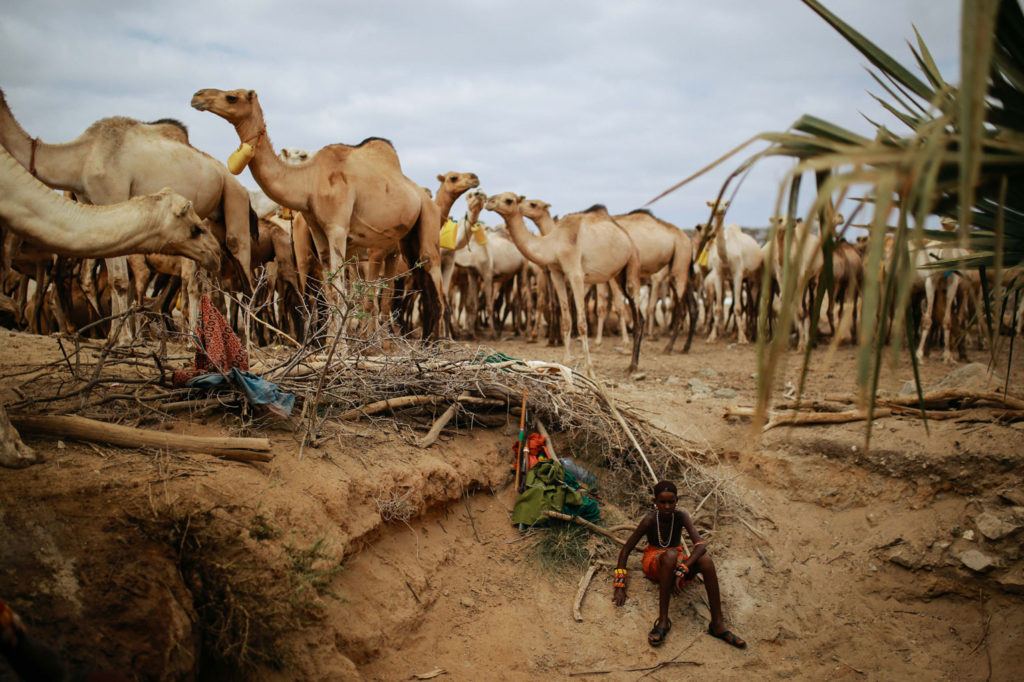
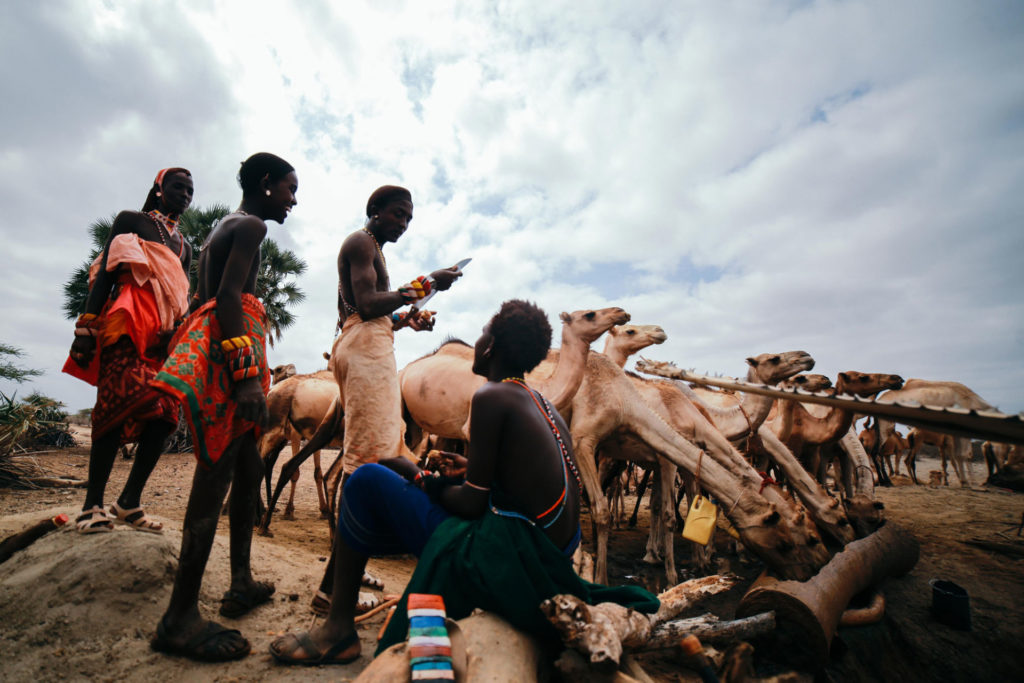
Josephine Alyaro, 50, who has nine kids and was a herder up until 2012, has also opted out. She switched to beading to make ends meet and pay for the many sets of school fees. Alyaro recalls a crucial moment in deciding to pivot away from herding: when her firstborn son was chased a long distance home by wild animals. “That’s when I realized that herding isn’t good for my family,” she says. “Things have to get so tough where you want to make a change.”
But such a lifestyle change is too drastic for others. Liajarua can’t imagine doing anything other than herding; the thought of looking for a city job is abhorrent to him, even though he is all too aware of the challenges facing him. “During the rainy season, this place is all good for grazing,” he says from underneath the shade of an overgrown acacia tree, “There’s milk and meat that we all share, and we live together. It’s very nice, compared to now.”
He points to the few bleating goats straggling up a slope nearby. “Animals are dying of hunger. The drought has doubled from what I remember in the past.”
In March 2022, Lesurmat was in Wasiniro, a region bordering Isiolo, Marsabit and Samburu counties. An increasingly dire need for access to water sources and grazing has caused spikes in internecine conflict, he says, as people are more willing to encroach on neighboring lands and risk conflict. More than a thousand herders congregated in Wasiniro that week, and several were killed in clashes as a result.
Cattle in particular need green pastures, so because of the drought, people are now keeping fewer animals, especially cattle, explained Lesurmat.
Despite the challenges posed to traditional life by the drought, life in these drying pastors remains anchored in the past; tradition is referenced every day, both for the origins of knowledge and to guide how people behave.
Many herders still look to the stars for guidance on what the future brings. Two stars, known as Lakira, are consulted in the sky at 7 p.m. to learn what the future bodes — whether there will be rain, good fortune or even war.
“If the stars meet together at one point, they communicate,” explains 26-year-old Lemoni Lagwanani. “One demands the life of the people, the other, that of livestock. They eventually reach a consensus. Should the first star win, mortality will come in the form of war or sickness. Should the other win, it will have obtained permission for a greater drought, which is harder on the animals, causing them to die.” Lagwanani learned to read the stars from his father, as most herders in the region have. “Also, depending on the direction of the new moon — which side it curls to — that indicates good or bad fortune.”
Animals percolate throughout many pastoral cultures, including for Galwaha, who is Samburu himself, in Manyatta South. Even though he is a Christian, his upbringing was rooted in pre-colonial traditions. At 14 years, the age of circumcision, one of the ineluctable rites of passage requires all boys to run after cattle. They also have to fetch “ubani,” a type of incense, from 45 miles away, drink cattle blood, and be confined in a hut for two weeks with only goat meat and sheep oil for nourishment — no water allowed. Galwaha had asked why they must do such things. “Life ahead is tough, you must go ahead to find a good life,” he recalled his elders telling him. “Sometimes you must suffer to get something good.”
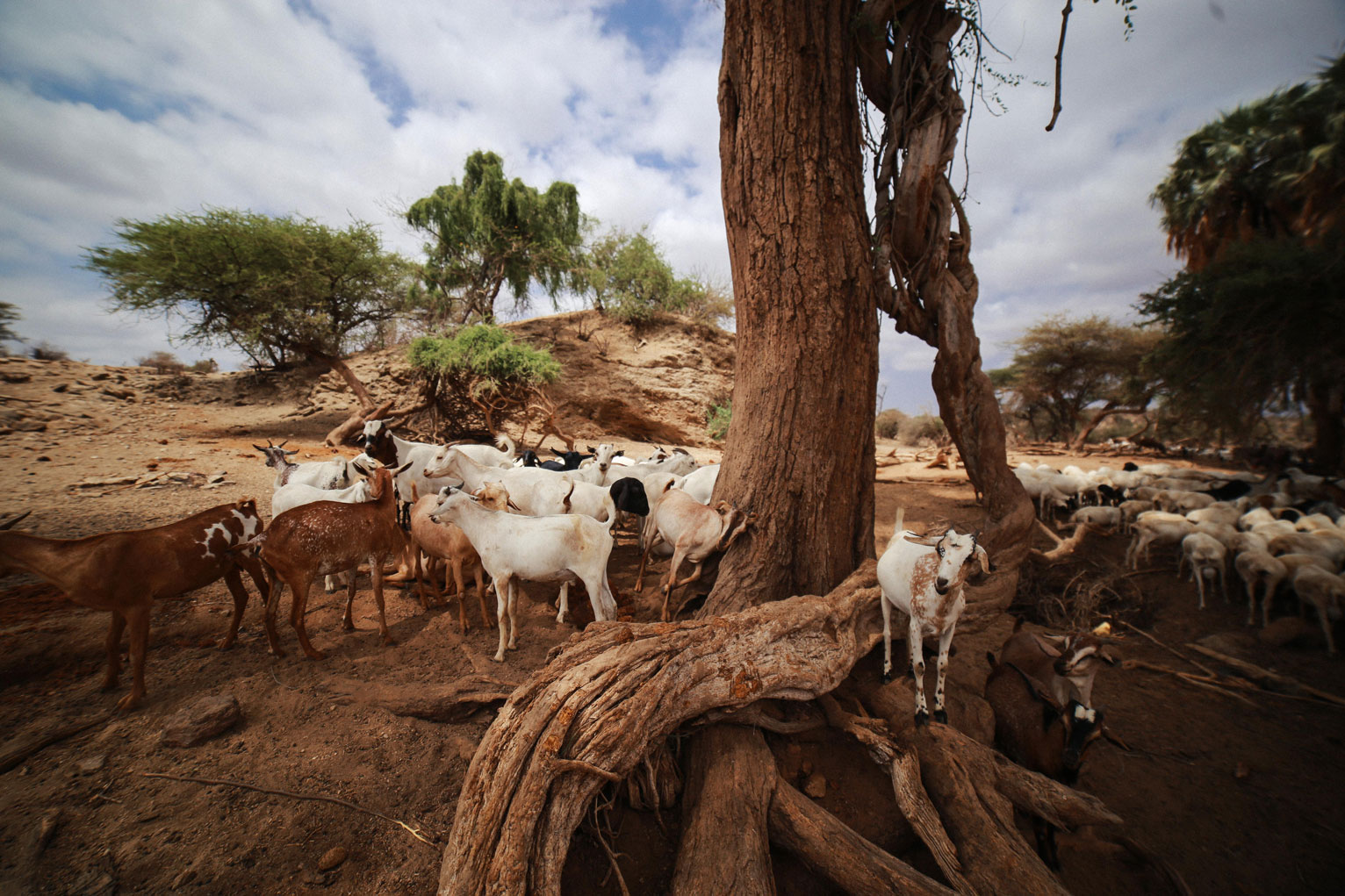
Goats resting in forested shade at Gue / Kang-Chun Cheng
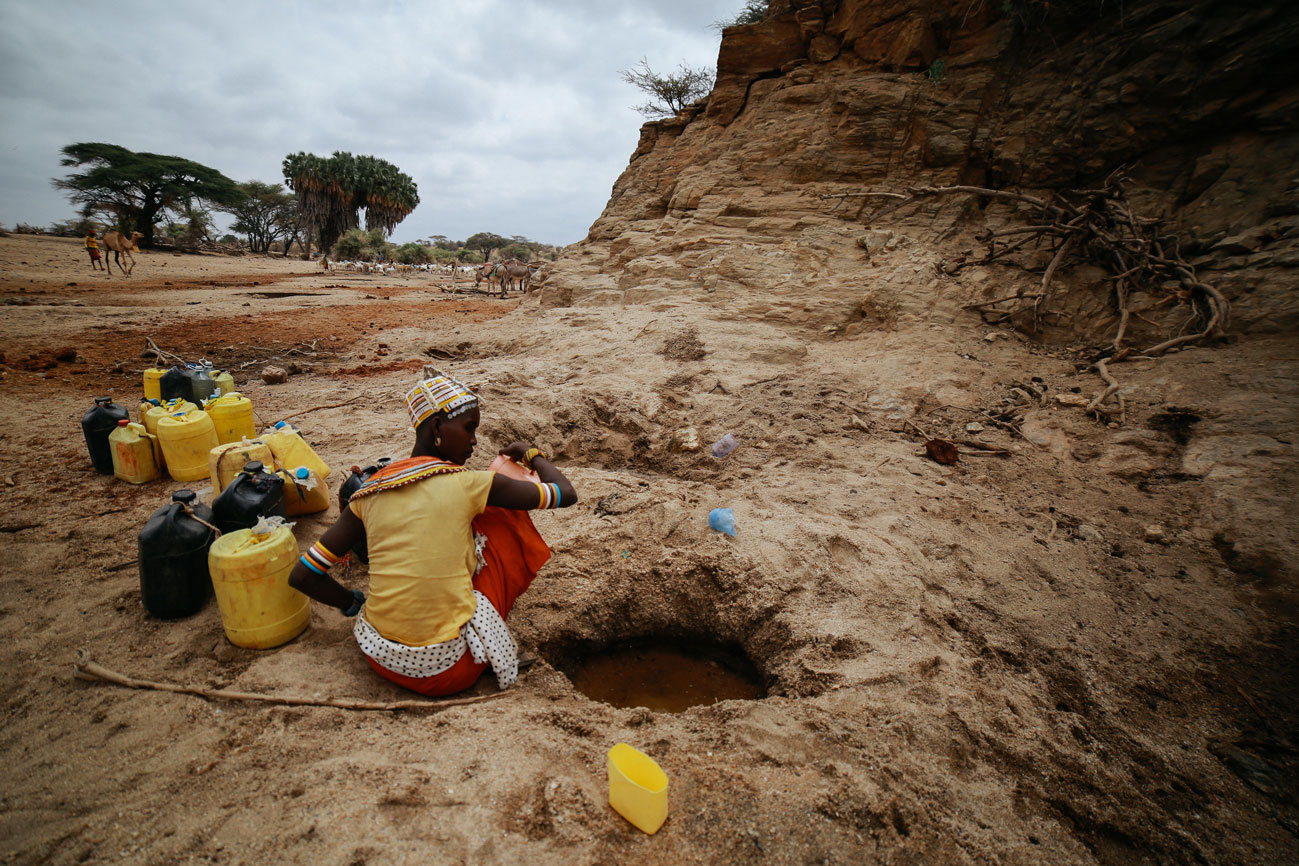
Scooping water for human consumption at Gue / Kang-Chun Cheng
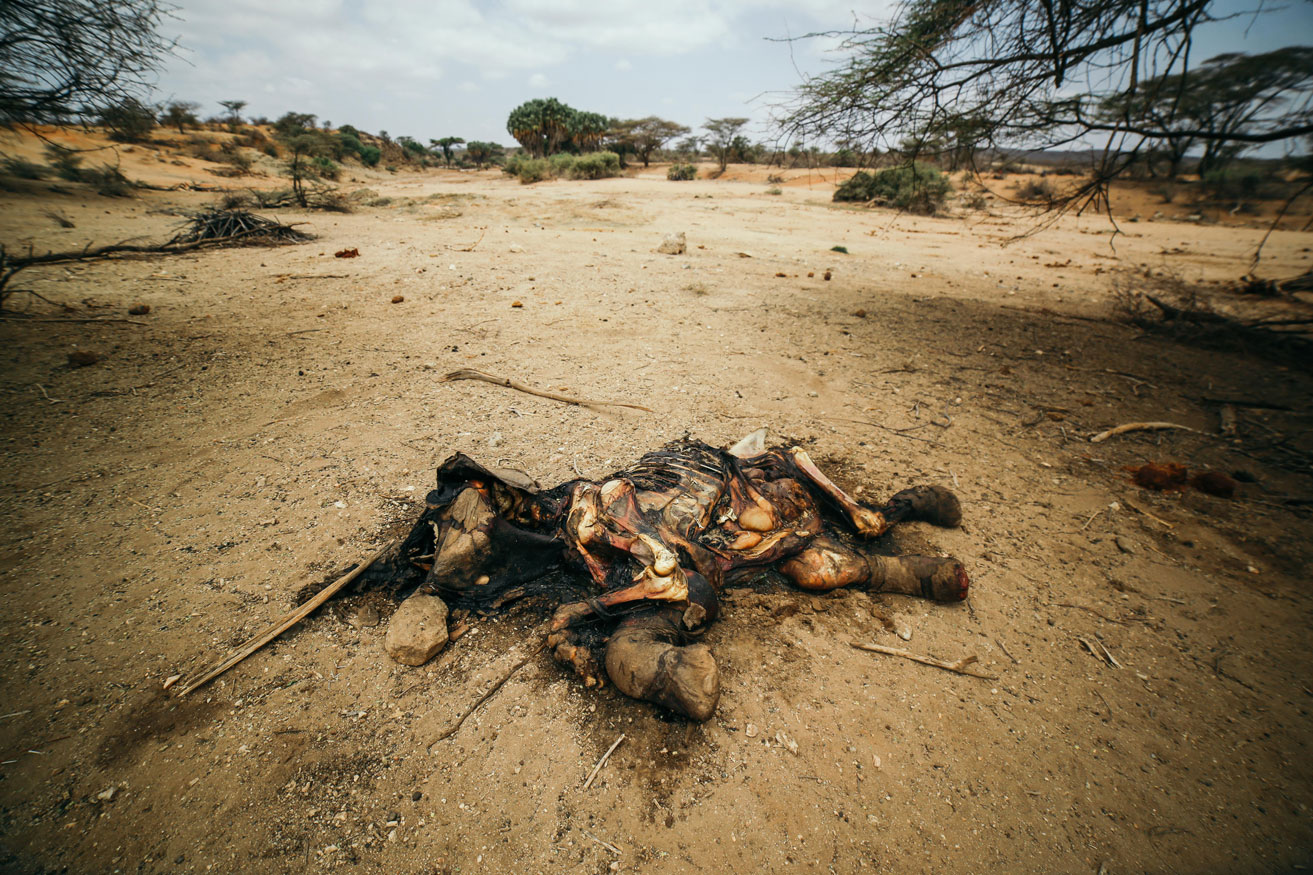
The carcass of a young elephant not far from Gue, which likely died from the drought / Kang-Chun Cheng
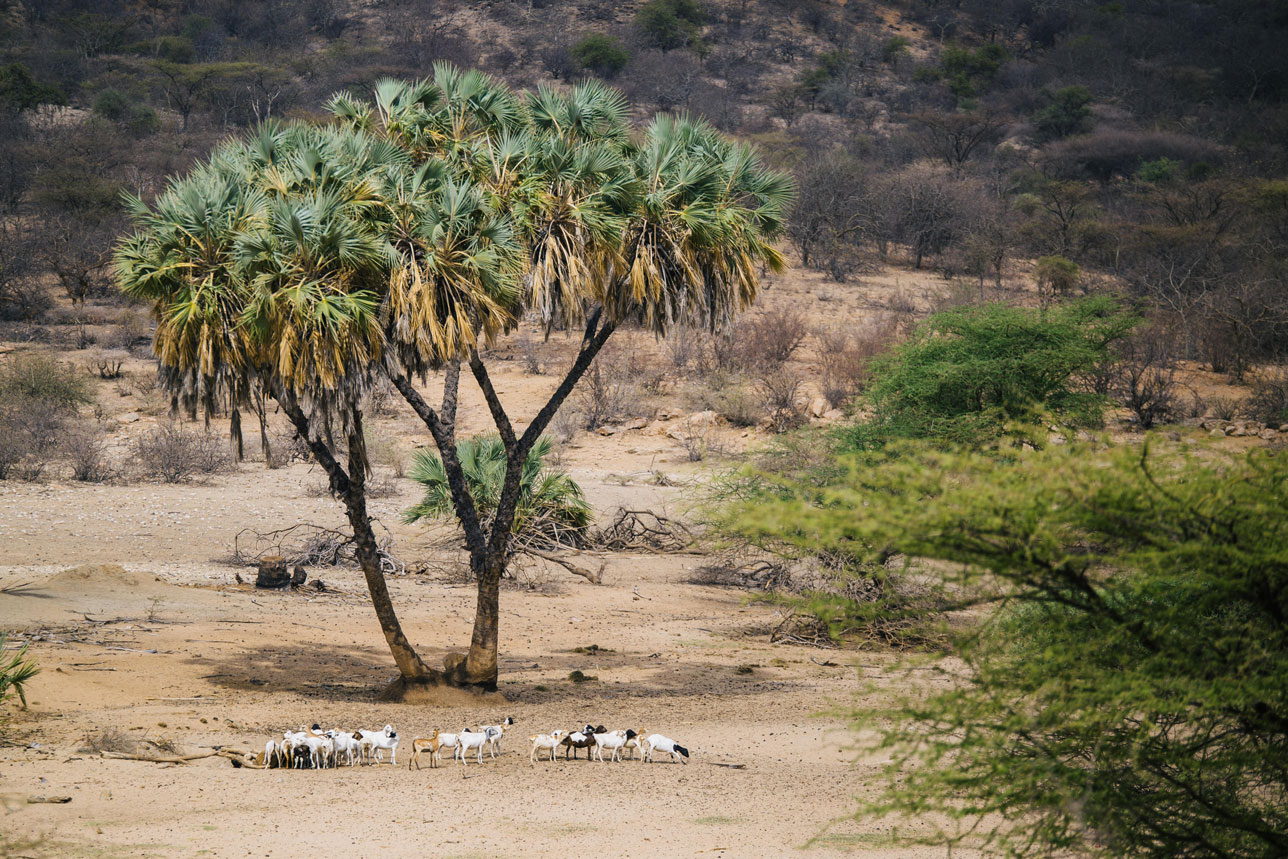
Gue watering hole, where people have traveled up to 45 miles to water their animals. Mounting climatic pressures have exacerbated the communities’ stress and poverty levels since their animals are their sole assets / Kang-Chun Cheng
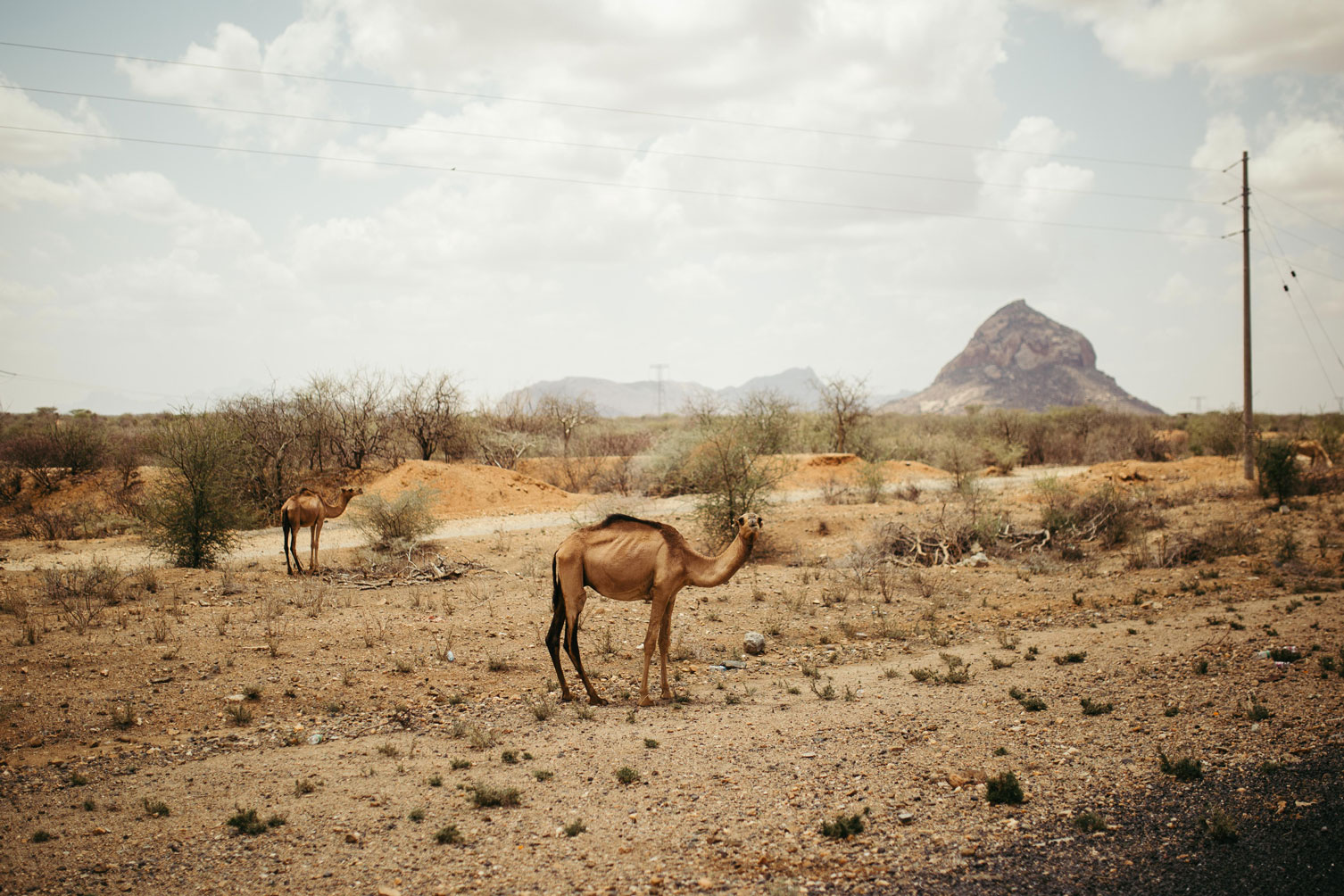
Camel spotted on the roadside between Merille and Laisamis tow / Kang-Chun Chen
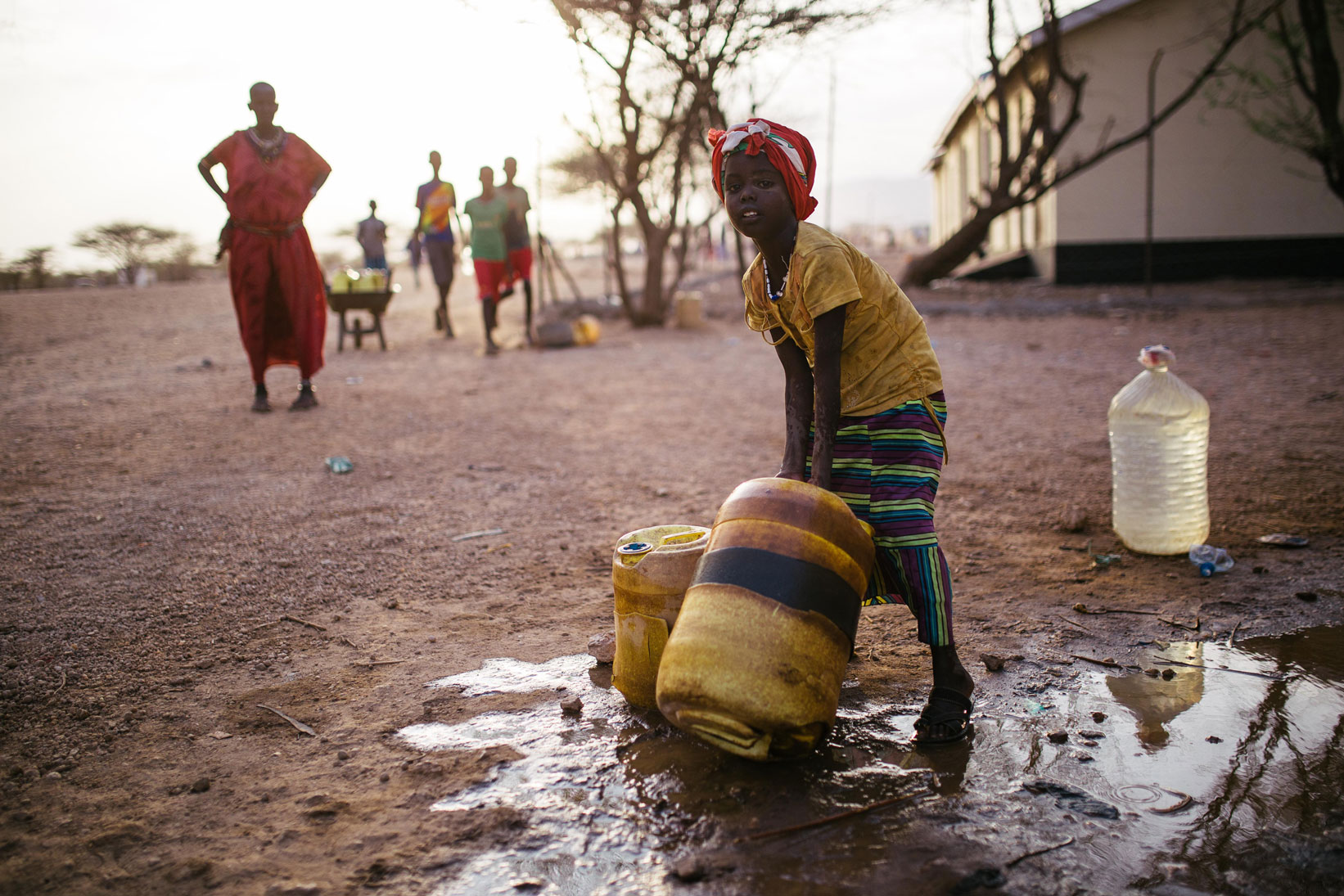
Kids gather water from a borehole tap in Manyatta South of Laisamis town / Kang-Chun Cheng

